Results 7,771 to 7,780 of 12096
Thread: Anandtech News
-
01-18-18, 08:12 AM #7771
Anandtech: The SilverStone SX800-LTI SFX-L 800W PSU Review: Big PSU, Small Niche
Small form factor and living room gaming systems are becoming more and more popular, with ever-increasing capabilities – and power requirements. SilverStone’s latest SFX-L PSU, the SX800-LTI, brings 80Plus Titanium efficiency levels and a maximum power output of 800 Watts for those seeking to build a compact but extra powerful gaming behemoth.
More...
-
01-18-18, 08:12 AM #7772
Anandtech: Samsung Starts Mass Production of 16Gb GDDR6 Memory ICs with 18 Gbps I/O S
This week, Samsung has announced that it has started mass production of its GDDR6 memory chips for next-generation graphics cards and other applications. The new chips will be available in 16 Gb densities and will feature an interface speed that is significantly higher when compared to that of the fastest GDDR5 and GDDR5X ICs can offer.
GDDR6 is a next-generation specialized DRAM standard that will be supported by all three leading makers of memory. Over time, the industry will introduce a great variety of GDDR6 ICs for different applications, performance and price requirements. What Samsung is announcing this week is its first 16 Gb GDDR6 IC that features an 18 Gbps per pin data transfer rate and offers up to 72 GB/s of bandwidth per chip. A 256-bit memory subsystem comprised of such DRAMs will have a combined memory bandwidth of 576 GB/s, whereas a 384-bit memory subsystem will hit 864 GB/s, outperforming existing HBM2-based 1.7 Gbps/3092-bit memory subsystems that offer up to 652 GB/s. The added expense with GDDR6 will be in the power budget, much like current GDDR5/5X technology.
The new GDDR6 architecture enables Samsung to support new and higher data transfer rates with non-esoteric memory form factors. To increase the interface speed, GDDR6 memory was redesigned both internally and externally. While details about the new standard will be covered in a separate article, two key things about the new memory tech is that GDDR6 features a x8/x16 per-channel I/O configuration, and each chip now has two channels. By contrast, GDDR5/GDDR5X ICs feature a x16/x32 I/O config as well as one channel per chip. While physically GDDR6 chips continue to feature a 16-/32-bit wide bus, it now works differently when compared to prior generations (as it consists of two channels).GPU Memory Math: GDDR6 vs. HBM2 vs. GDDR5X Theoretical GDDR6 256-bit memory sub-system Theoretical GDDR6 384-bit memory sub-system NVIDIA Titan V
(HBM2)NVIDIA Titan Xp NVIDIA GeForce GTX 1080 Ti NVIDIA GeForce GTX 1080 Total Capacity 16 GB 24 GB 12 GB 12 GB 11 GB 8 GB B/W Per Pin 18 Gb/s 1.7 Gb/s 11.4 Gbps 11 Gbps Chip capacity 2 GB (16 Gb) 4 GB (32 Gb) 1 GB (8 Gb) No. Chips/KGSDs 8 12 3 12 11 8 B/W Per Chip/Stack 72 GB/s 217.6 GB/s 45.6 GB/s 44 GB/s Bus Width 256-bit 384-bit 3092-bit 384-bit 352-bit 256-bit Total B/W 576 GB/s 864 GB/s 652.8 GB/s 547.7 GB/s 484 GB/s 352 GB/s DRAM Voltage 1.35 V 1.2 V (?) 1.35 V
In addition to higher performance, Samsung’s GDDR6 16 Gb chips also operate at 1.35 V voltage, down 13% from 1.55 V required by high-performance GDDR5 ICs (e.g., 9 Gbps, 10 Gbps, etc.). According to Samsung, the lowered voltage enables it to lower energy consumption of GDDR6 components by 35% when compared to ultra-fast GDDR5 chips. Samsung attributes lowered voltage to its new low-power circuit design. Meanwhile, based on information we know from Micron and SK Hynix, their GDDR6 DRAMs will also operate at 1.35 V.
Samsung uses one of its 10nm-class process technology to produce its GDDR6 components. The company claims that its 16 Gb ICs bring about a 30% manufacturing productivity gain compared to its 8 Gb GDDR5 chips made using its 20 nm process technology. Typically, Samsung’s productivity gain means increase in the number of chips per wafer, so the company has managed to make its 16 Gb ICs smaller than its previous-gen 8 Gb ICs. The company does not elaborate on its achievement, but it looks like the new chips are not only made using a thinner process technology, but have other advantages over predecessors, such as a new DRAM cell structure, or an optimized architecture.
Samsung’s 16 Gb GDDR6 chips come in FBGA180 packages, just like all industry-standard GDDR6 memory components from other manufacturers.
Samsung did not disclose when it plans to ship its GDDR6 DRAMs commercially, but since it had already started mass production, it is highly likely that the company’s clients are ready to build products featuring the new memory.
Related Reading- Micron Finishes GDDR6 Internal Qualification, Eyes H1'2018 Mass Production
- Samsung Starts Production of 8 Gb DDR4-3600 ICs Using 2nd Gen 10nm-Class Tech
- Samsung Pre-Announces 16 Gbps GDDR6 Chips for Next-Gen Graphics Cards
- Micron Discusses GDDR: 16 Gbps GDDR5X, 16 nm GDDR6 and GDDR5
- SK Hynix Advances Graphics DRAM: GDDR6 Added to Catalogue, GDDR5 Gets Faster
More...
-
01-18-18, 12:19 PM #7773
Anandtech: Synology Launches Major Package Updates and Demonstrates Recent NAS Models
CES provides us the opportunity to look at the latest and greatest products in each technology vertical. Our NAS coverage started with Asustor's AS4000 series last week. Today, we will take a look at the updates from Synology. While there was only one 'new' hardware product introduced during the course of CES (the Rangeley-based 1U 4-bay RS818+/RS818RP+, along with a 4-bay RX418 expansion unit), the software updates turned out to be much more interesting. Synology demonstrated three major packages.
Moments
Synology already has a great photo backup and viewing package in Photo Station. By combining it with the traditional PC backup process and the DS Photo mobile app, it became an effective tool to manage albums. Synology is adding Moments, a completely new application, that allows users to backup, organize, and sort their photographs. Synology claims that the deep learning and automatic organization tools that are part of Moments allow it to identify various aspects of the photos and sort them into albums automatically during the indexing process. Moments will also come with a separate mobile app to enable easy backup of daily photos.
I have found this aspect of Google Photos to be incredibly useful, and it is exciting to see something similar come without any associated privacy concerns. Synology's official page for the Moments feature indicates that some of the deep learning features are available only on models with powerful CPUs.
Drive
Synology is launching Drive as a revamped version of the existing Cloud Station suite. It would not be wrong to say that the multitude of 'Cloud' packages such as Cloud Station Server, Cloud Station ShareSync, Cloud Station Backup, and Cloud Sync only ended up confusing the average user. Synology is betting on the new Drive package to act as a single portal for all of the file management and syncing needs.
There is an emphasis on team collaboration, with the Office feature (discussed below) using the Drive as the hub. Desktop and mobile clients ensure that users / teams can have access to the files in an organized manner from any device. It also has basic synchronization functionality (in effect, a private Dropbox-like feature). The universal search feature helps users to quickly find relevant documents and files.
Office
Synology has been making an effort to extend the functionality of their NAS models by providing typical business productivity applications with a multi-user focus. Synology users had two packages - Documents and Spreadsheets - to replicate the functionality of online browser-based real-time collaborative office tools. A presentations package, Slides, is being added now.
The Drive package is used as the management front-end for all the Office tools.
Before looking at the hardware on show at CES, a quick mention of the Synology OS (DiskStation Manager) 6.2 beta release is in order. It includes updates to the Storage Manager (adds a data scrubbing feature) and the iSCSI Manager (new LUN with btrfs that enables almost instantaneous snapshotting regardless of LUN size), along with some new snapshot and replication features. Synology showed the following recently introduced hardware at the show:
DS218 (PDF): Based on the Realtek RTD1296 with a quad-core Cortex-A53, this 2-bay value-series member allows 4K transcoding on-the-fly. It also supports snapshots (a first for the ARM-based Synology value series).
DS3018xs (PDF): Based on the Intel Pentium D1508 Broadwell-DE SoC (dual-core), this 6-bay desktop NAS can be scaled up to 30 bays. It also has two internal M.2 slots, 4x GbE ports, and supports an optional 10GbE card.
FS1018 (PDF): Simlar to the DS3018xs, the FS1018 is also based on a Pentium D1508 SoC, has four GbE ports, and supports an optional 10GbE (or M.2) PCIe card. However, it is a 12-bay unit (scalable to 36 drives) and supports 2.5" drives only. It is meant to be used with SSDs - targeting applications that require very high performance. In addition to traditional RAID modes, the FS1018 also supports RAID F1 (PDF) - a scheme that distributes parity blocks unevenly so that all the SSDs in the NAS do not get worn out at the same time.
Overall, the software updates (both packages and core features in DSM 6.2) are very interesting and useful, with RAID F1 being an interesting approach to an all-flash NAS. On the hardware side, we are surprised to see Synology still introducing models with 4-year old SoCs from Intel. While we did see Intel's Apollo Lake in models such as the DS218+ and DS418play, the SMB / SME market is still being served by Rangeley (Atom C2538 in the RS818+) and dual-core Broadwell-DE SKUs (Pentium D1508 in the DS3018xs / FS1018). With the official release of Virtual Machine Manager, it would make more sense for Synology to release more powerful hardware for SMBs / SMEs in order to enable running of resource-intensive guest operating systems.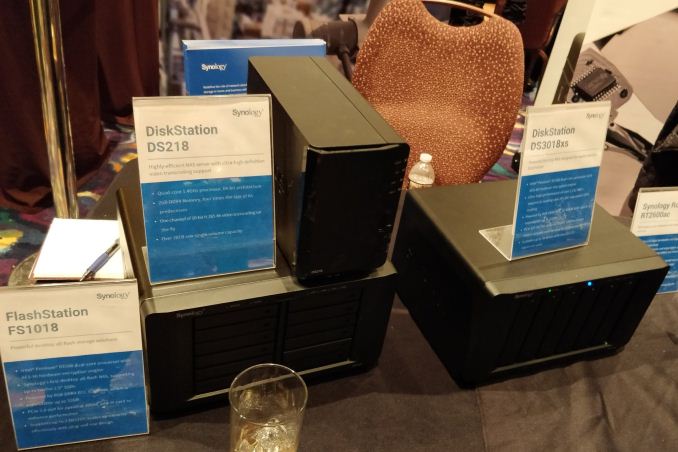 Synology at CES 2018 (Picture Courtesy: MissingRemote)
Synology at CES 2018 (Picture Courtesy: MissingRemote)
Finally, we asked Synology about their response to the Meltdown / Spectre security issues. They already have a security advisory page, and categorize the risk as moderate. Given the relatively closed nature of DSM, we believe that users should not be at risk as long as they are running trusted packages only, and steps have been taken to ensure no unauthorized access to the NAS.
More...
-
01-18-18, 12:19 PM #7774
Anandtech: ADATA at CES 2018: Incoming XPG SX8200 SSDs, From 240 GB to 1.92 TB in M.2
LAS VEGAS, NV — At CES 2018, ADATA demonstrated its new high-end XPG SX8200 SSDs. The new drives use Silicon Motion’s SM2262 controller as well as 3D TLC NAND. The SSDs will be available in configurations featuring up to 2 TB of raw 3D TLC NAND memory and promise to offer up to 3.2 GB/s sequential read speed.
Silicon Motion quietly introduced its latest-generation controllers at Computex 2017, with multiple vendors showing off SSDs powered by the SM2262 and SM2263XT controllers. Back then some promised that a new breed of SMI-based drives was just around the corner and the products would ship in 2017. As it happens sometimes, final stages of development took a bit longer than expected and we are going to see a host of new SSDs in 2018. At least on paper, SM2262-based SSDs look very fast. In addition, improved performance of the controller (vs. predecessors) enables developers of drives to use sophisticated LDPC ECC algorithms, enhancing endurance of SSDs that use 3D TLC memory.
ADATA will likely be among the first companies to ship SM2262-based drives with the XPG SX8200 being their first offering featuring the controller. The XPG SX8200 will be available in 240 GB, 480 GB, 960 GB as well as 1.92 GB configurations and will thus be able to address users with vastly different capacity needs. ADATA’s current-generation consumer M.2 drives offer capacities up to 1 TB, leaving the highest end of the market to companies like Samsung. With the XPG SX8200, ADATA is announcing a 1.92 TB version that will inevitably compete against Samsung’s top-of-the-line 960 Pro SSD for end-users who need a lot of non-volatile storage space.
As for performance of the XPG SX8200, ADATA is sharing official figures from Silicon Motion: up to 3.2 GB/s sequential read speed and up to 1.7 GB/s sequential write speed. The manufacturer does not publish random performance numbers, but Silicon Motion expects SM2262-based drives to hit up to 370K/300K random read/write 4K IOPS. Both Silicon Motion and ADATA cite peak numbers and real-world performance of the drives will be different.
ADATA plans to start selling the XPG SX8200 sometime in February, starting with the lower capacities. The company did not announce anything concerning its offerings based on a more powerful SM2262EN controller at CES. Meanwhile, the fact that it assigned the SM2262-based SSDs to the XPG SX8200-series indicates that the XPG 9200-series (offering even higher performance) is a spare number in the stack and will be used when the time is right.ADATA XPG SX8200 Brief Specifications Capacity 240 GB 480 GB 960 GB 1.92 TB Controller Silicon Motion SM2262 NAND Flash 3D TLC NAND Form-Factor, Interface M.2-2280, PCIe 3.0 x4, NVMe 1.2 Sequential Read 3200 MB/s Sequential Write 1700 MB/s Random Read IOPS 370K IOPS (SMI data) Random Write IOPS 300K IOPS (SMI data) Pseudo-SLC Caching Supported DRAM Buffer Yes, capacity unknown
Related Reading- Mushkin Unveils New Pilot & Helix-L M.2 SSDs at CES 2018: Up to 3.5 GB/s, Up to 2 TB
- ADATA Announces XPG Storm: A Cooler for M.2 SSDs with a 16500 RPM Fan
- ADATA Launches XPG SX9000: 2.8 GB/s Seq. Read, Marvell Controller, Up to 1 TB of MLC
- ADATA Announces XPG Gammix S10: 3D TLC, SM2260, 1.7 GB/s Seq. Read, Radiator
- ADATA Launches XPG SX8000: High-End M.2 NVMe SSD Featuring 3D MLC NAND
More...
-
01-18-18, 02:27 PM #7775
Anandtech: iBuyPower at CES: Project Case Builder, for Better Case Customization
LAS VEGAS, NV - iBuyPower has unveiled a couple of new items at CES 2018 this year including its cool looking Snowbird case side panel, new LED cables ties, and also 'Project Case Builder'. Project Case Builder is an internal modular case for customers when buying a pre-built system, and is designed to be useful to customers with special requests, or eSports teams who would like full customization of their chassis.
Over the years, we have seen a lot of new devices and technology allowing people to upgrade their PCs components. But when talking about cases, outside of swapping a panel here or there, the case is pretty much a static entity in the system. Only one major chassis manufacturer has decided to go above and beyond this. iBuyPower, as a system integrator, has developed Project Case Builder with their customers in mind. For all intents and purposes, Project Case Builder essentially makes the chassis modular allowing iBP to swap out storage bays, panels, feet and other parts depending on a customer request.
They displayed an exploded version of a prototype mid-tower case designed to show off how many different parts can be swapped in and out of the chassis. They also showed off a ‘finished’ version with a custom aluminium front panel and clear side panel, along with a lot of internal RGB lighting. Going the modular route for their cases allows them to keep less stock of different parts saving in warehouse space and other logistics. Customizations include skins and paint, and different arrangements for the components. It was mentioned that iBP's Snowblind LCD panel may be an option down the road.
We will get more clarity on available options when it is closer to a release date. As of now, it will come in mid-tower form only with a potential to add a full tower version and other features later. Pricing was not set yet however they do hope to have it available sometime in Q2 2018 as part of its pre-built system programme.
Related Reading- Riotoro at CES 2018: New Full-Twoer and Mid-Tower Cases, new Enigma G2 Power Supply
- Deepcool Releases Quadstellar Four-lobed Chassis: 'Smart' Case, Unique Shape
- In Win at CES 2018: New E-ATX 915 Chassis with USB 3.1 Gen2 Type-C
More...
-
01-19-18, 07:49 AM #7776
Anandtech: HyperX at CES 2018: Predator DDR4 with IR Sensors for Better RGB Sync
LAS VEGAS, NV - HyperX announced it has designed IR communication channels into each of their new HyperX Predator DDR4 RGB modules which will allow multiple modules to sync in LED lighting. In other words, each DRAM module has an IR sensor on it in order to detect the stick next to it (during startup, the module furthest away from the CPU is determined to be the ‘master’). If the sensor is blocked, the RGB will be static.
The reason for this method of sync, HyperX says, is because different motherboard vendors have different ways of implementing memory traces, which can affect RGB LED timing. Motherboard vendors typically use either a daisy chain or a T-Topology design rule, which both have pros and cons when it comes to timing - with this IR method, HyperX says they can ensure that no matter what layout, the modules will stay in perfect sync.
The sticks are powered by the DRAM slots itself so there isn’t a need for extra cables to light them up. The implementation of the IR sensor on each module syncs the LEDs with each stick negating the need for a separate controller. The HyperX Predator DDR4 RGB modules are designed to work with MSI’s Mystic Light, ASUS’ Aura Sync, and Gigabyte’s RGB Fusion for system RGB integration and support multiple lighting profiles.
Pricing was not released yet, but HyperX did say it will add a small amount to the cost per module, but they feel it is worth it to ensure a perfect sync 'every time'. The HyperX Predator DDR4 RGB RAM is expected to be released in Q2 of this year.
Gallery: HyperX Predator DDR4 RGB Gallery




Related Reading:- Mushkin at CES 2018: CarbonEXT 1TB USB 3.0 SSD, Swap USB Type-A & Type-C drive
- Patriot Announces EVLVR Thunderbolt 3 SSD: Phison PS5008-E8, Up to 1.5 GB/s, 1 TB
- Toshiba Announces RC100 NVMe SSD and XS700 Portable SSD
- ADATA Unveils New XPG RGB DDR4 Kits: Spectrix D60 4600 MHz & Spectrix DS40 SO-DIMMs with LEDs
More...
-
01-19-18, 08:51 AM #7777
Anandtech: The AnandTech Podcast, Episode 43: CES 2018 Headlines and Highlights
The annual CES show is biggest of AnandTech’s main six shows of the year, and with it comes a wall-to-wall meeting schedule with press events starting two days before the show is supposed to start. After clocking up the miles and calling many taxis, we managed to get an hour before flying home to discuss the headlines and highlights from the show. Key topics included the Intel, AMD, and NVIDIA keynotes, and we go through a number of prominent show announcements that might have passed you by.
More...
-
01-19-18, 10:41 AM #7778
Anandtech: iBuyPower at CES 2018: RGB LED Lighting... on Power Cables
There's almost nothing left inside a PC that could be fitted with RGB LEDs. At least that was our assumption until we came across iBuyPower's suite at CES this year. For the person that has RGB everything, how about some RGB cables to go with it?
Technucally iBP isn't adding LEDs to cables themselves here - they are lit up through a cable management piece which connects to the cables as opposed to the cables themselves. The RGB LED cables to provide their light through cable management attachments which mount to individual cables shining their light down and around the cable path. iBuyPower wanted to integrate the lighting right into the cables themselves, however, after testing they found it was not practical as the wires were too rigid among other findings. Users are able to daisy chain up to three of these devices which connect to an RGB header on your motherboard allowing you to light up the full length of most cable runs.
We imagine the motherboard software is able to control the lighting and synchronize it to the RGB LEDs attached to it. In the pictures, we are able to see these LED connectors on 6-pin and 8-pin PCIe, 8-pin EPS, and 24-pin ATX for the motherboard and is a novel way to show off your custom cabling inside a chassis.
iBuyPower did not mention the cost of the device nor when it will be available on the market, but did say they will be sold in packs of three. They are expected to be an optional extra on system builds as well.
Gallery: iBuyPower RGB Cable Gallery





Related Reading- Riotoro at CES 2018: New Full-Twoer and Mid-Tower Cases, new Enigma G2 Power Supply
- Deepcool Releases Quadstellar Four-lobed Chassis: 'Smart' Case, Unique Shape
- In Win at CES 2018: New E-ATX 915 Chassis with USB 3.1 Gen2 Type-C
More...
-
01-19-18, 01:23 PM #7779
Anandtech: ASRock at CES 2018: Micro-STX DeskMini GTX PC Gets Coffee Lake
ASRock introduced its second-generation Micro-STX gaming desktops with discrete graphics processors at CES 2018. The new DeskMini GTX systems are based on the Intel Z370 platform and support Intel’s six-core Coffee Lake processors.
When Intel introduced its 5” × 5” initiative (an initial name for Mini-STX) back in 2015, the company wanted to create a highly-integrated small form-factor platform with interchangeable processors for PC makers. The platform was not supposed to support any add-in-boards, and therefore wouldn't overlap with Mini-ITX and Micro-ATX. ASRock was among the first brands to jump on the Mini-STX bandwagon in 2016, but it did not take the company long to adopt the form-factor for compact gaming computers. In 2017, the company launched its DeskMini GTX/RX SFF gaming PCs based on its own Micro-STX form-factor, an extended version of Mini-STX with an MXM slot for GPU modules and three additional M.2 slots for SSDs. The initial ASRock DeskMini systems were based on Intel’s B250 and Z270 chipsets and therefore only supported Skylake and Kaby Lake processors. In the coming months, ASRock’s DeskMini SFF PCs will be upgraded with Intel’s six-core Coffee Lake CPUs.
The new ASRock DeskMini systems that the company demonstrated at CES 2018 look exactly like their predecessors released last year and offer similar connectivity — 802.11ac Wi-Fi, GbE, USB 3.0 Type-A, USB 3.0 Type-C, DisplayPort, HDMI, 3.5-mm audio jacks, etc. Meanwhile, the new DeskMini GTX systems are based on the Intel Z370 PCH, the six-core Core i7-8700 CPU and are equipped with a 270 W external power supply.
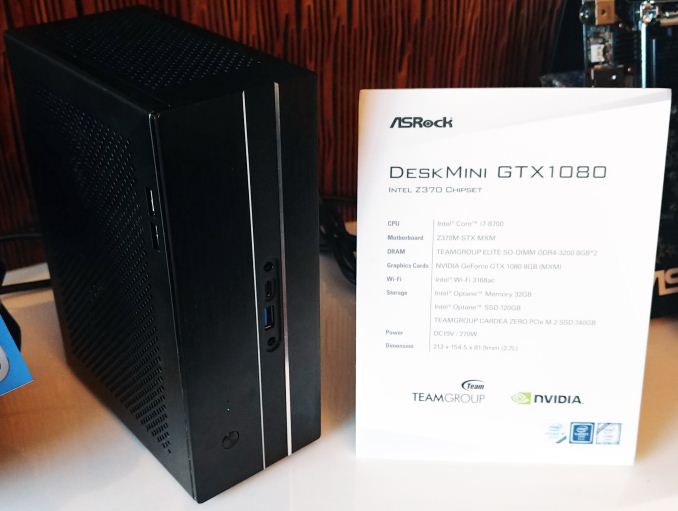

ASRock will offer the new DeskMini machines with various MXM modules featuring different GPUs (e.g., GeForce GTX 1060/1070/1080, etc.), memory and storage options when it ships them in the coming months. One of the high-end systems demonstrated at CES was outfitted with Intel’s Core i7-8700, NVIDIA’s GeForce GTX 1080 module, 16 GB of DDR4-3200 memory, a 32 GB Optane Memory drive, a 120 GB Optane SSD as well as a 240 GB PCIe SSD from Team Group.
Exact ETA and pricing of ASRock’s new DeskMini GTX systems remain to be seen.
Related Reading:
- Zotac at CES 2018: ZBOX MAGNUS Upgraded with Coffee
- MSI at CES 2018: New Desktop PC’s - Updated Trident 3 Arctic, Infinite X, and Aegis Ti3
- The AnandTech Coffee Lake Review: Initial Numbers on the Core i7-8700K and Core i5-8400
More...
-
01-19-18, 01:23 PM #7780
Anandtech: Kingston at CES 2018: A 6.4 TB U.2 Enterprise SSD with Four M.2 Behind a P
This year at CES, one of the interesting things at the Kingston suite was a demonstration of its new enterprise-grade DCU1000 SSDs. The current U.2 drives use four consumer-grade KC1000 M.2 SSDs behind a PCIe switch to offer up to 3.2 TB of useful capacity as well as a massive aggregated random read/write performance. The capacity of the overall drive at this point is limited to the M.2 drives being used.
The Kingston DCU1000 is a U.2 backplane internally, with four M.2 slots, integrated power loss protection, and the Avago ExpressLane PEX 8725 24-lane 10-port PCIe switch. The switch enables four M.2 drives to be used over a single U.2/SFF-8639 interface (PCIe 3.0 x4) and supports hot plugging. Kingston uses four KC1000 SSDs with custom firmware for its DCU1000 and plans to offer the U.2 drive in capacities of up to 3200 GB in the second quarter.
Kingston’s KC1000 SSDs are based on the Phison PS5007-E7 controller as well as planar MLC NAND. The drives are normally available in 240 GB, 480 GB and 960 GB configurations, but for the DCU1000 the manufacturer uses KC1000 800 GB SSDs. The lower capacity suggests that Kingston allocates a significant part of the onboard NAND memory for overprovisioning to compensate for using consumer-grade MLC.
The four drives installed into one DCU1000 are considered as independent software devices, but may operate in software RAID 0 mode to maximize performance. Obviously, the DCU1000 cannot hit anything higher than 3.8-3.9 GB/s with sequential reads due to PCIe 3.0 x4 limitation even in RAID 0, as any other U.2 drive. Meanwhile, Kingston advertises an aggregated read speed of 30 GB/s and an aggregated write speed of up to 27 GB/s for a 1U box containing 10 DCU1000 drives. As for random read reads, Kingston indicates that the box is capable 7M/6.6M read/write 4K IOPS (presumably at high queue depths).
While the Kingston DCU1000 can potentially offer a rather high aggregated performance, its capacity of 3.2 TB may be insufficient for certain mixed-use environments. Apparently, the company is already working on a special version of its next-gen consumer flagship drive based on 3D NAND that it will install into the DCU1000 to double capacity and random performance.
Usage of multiple M.2 SSDs to build high-capacity/high-performance server-/workstation-grade drives is nothing new: HP, Seagate and some other companies offer PCIe storage solutions employing multiple SSD modules. Kingston will be among the first well-known brands to use M.2 drives for a server-grade U.2 SSD. The architecture has its pros and cons. On the one hand, Kingston does not need to use enterprise-grade SSD controllers and procure huge amounts of enterprise-grade NAND flash specifically for server drives (that may sit in stock for a while). Besides, it can relatively quickly start using different drives (with proper firmware) with the DCU1000 backplane. On the other hand, enterprise controllers have a feature set that is better suited for datacenter environments and the PEX 8725 switch most probably eats most, if not all, the savings that Kingston gets by not using an enterprise-grade SSD controller.
The reason for designing such a drive, using a PCIe switch and M.2 drives, comes down to its intended use cases. U.2 drives are hot-swap, and being behind a PCIe switch allows the M.2 drives to also gain that functionality. The use-case presented to us in our briefing was one for video editing, where a film studio has a server/machine full of these drives, and when a days recording is done, the drives can be packed up and shipped to a visual effects studio (either by courier, or by placing an intern on a flight) to do their magic. This is commonly known as sneaker net, and offers much better bandwidth than transferring the raw 8K/16K footage through fat internet pipes. (Big data center services, like Google/Amazon, literally ship petabytes of data around using couriers, as the overall bandwidth is quicker.) The key to doing this is a combination of featureset (hotswappable, power loss protection) and storage density. While the first drives available will be in the 3.2 TB range, Kingston are ready and waiting to move forward with a 6.4 TB version when the M.2 drives double in capacity. One minute of uncompressed 16-bit 8K video comes in 284 GB, so the higher the capacity, the better. Having good speed and good random performance helps as well.
The KC1000 will be available to select customers of Kingston in the coming months. Pricing will depend on purchase volumes and other factors.
Related Reading- Corsair Launches the Neutron NX500 1.6 TB PCIe SSD
- The Corsair Neutron NX500 (400GB) PCIe SSD Review: Big Card, Big Pricetag
- Phison at CES 2018: Thunderbolt SSDs, Second-Gen NVMe Controllers
- ASRock at CES 2018: Ultra Quad M.2 PCIe Card
- Seagate Introduces 10GB/s PCIe SSD And 60TB SAS SSD
- Seagate Announces PCIe x16 SSD Capable Of 10GB/s
More...
Thread Information
Users Browsing this Thread
There are currently 9 users browsing this thread. (0 members and 9 guests)





 Quote
Quote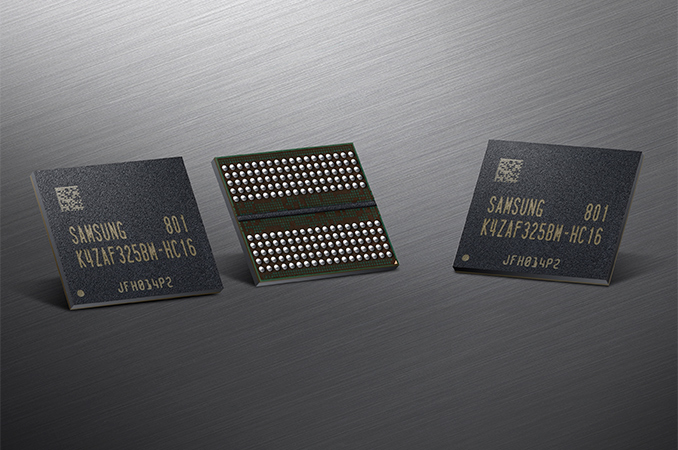
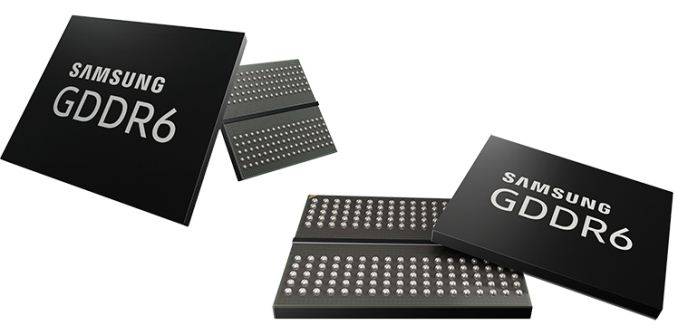



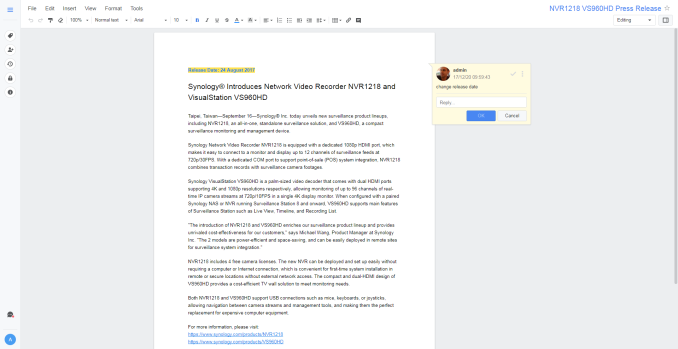
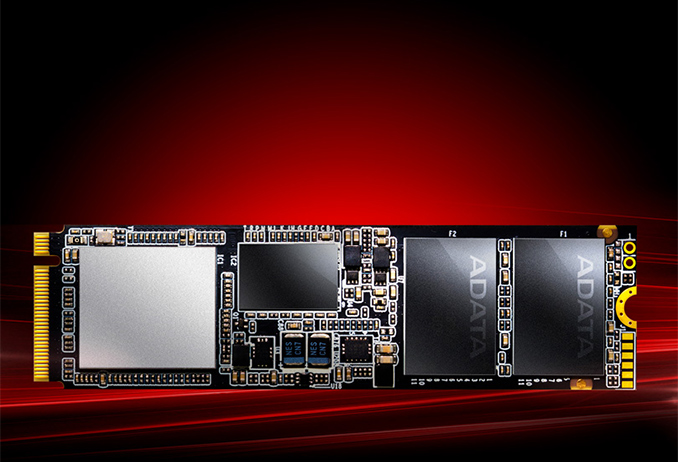
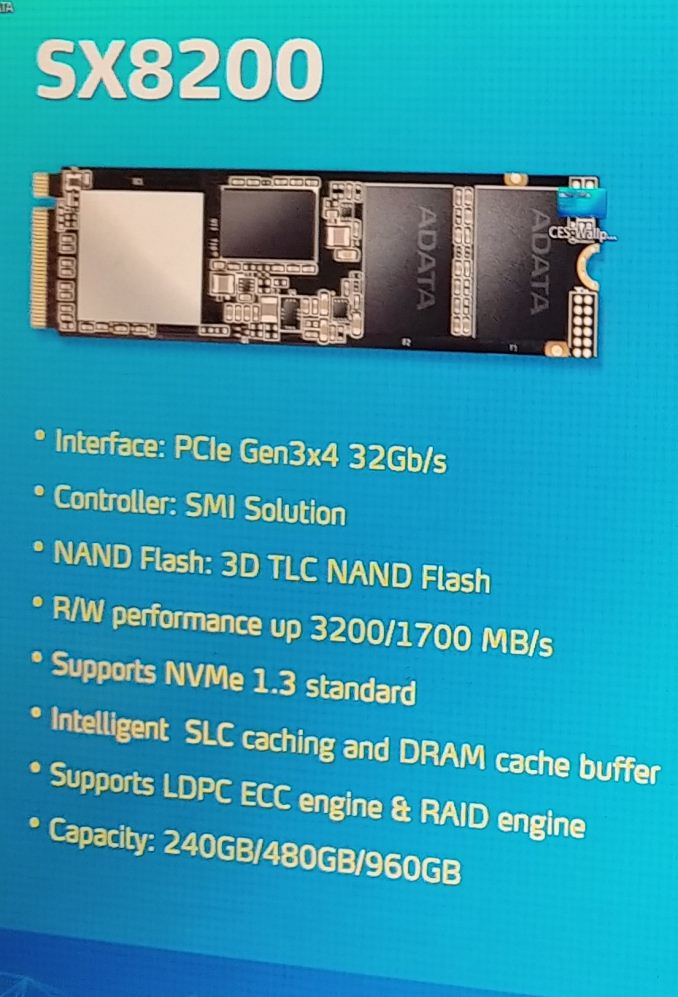

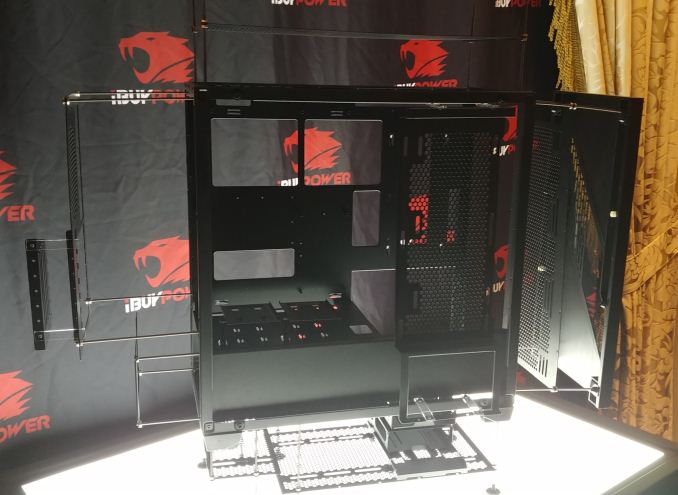
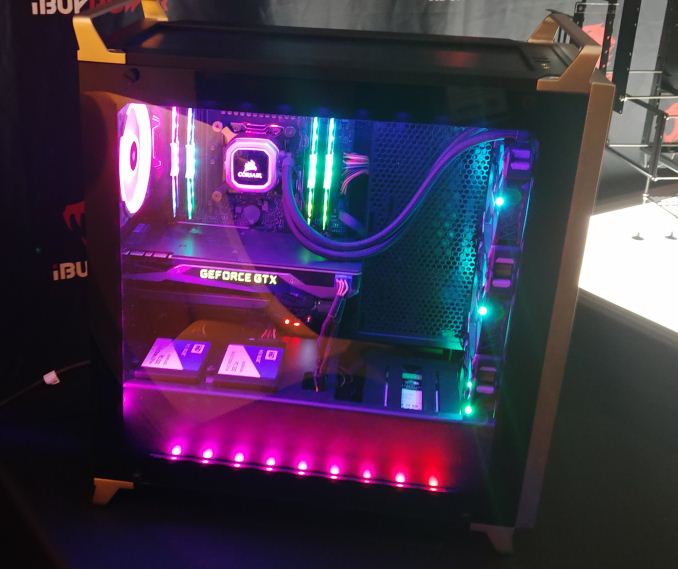
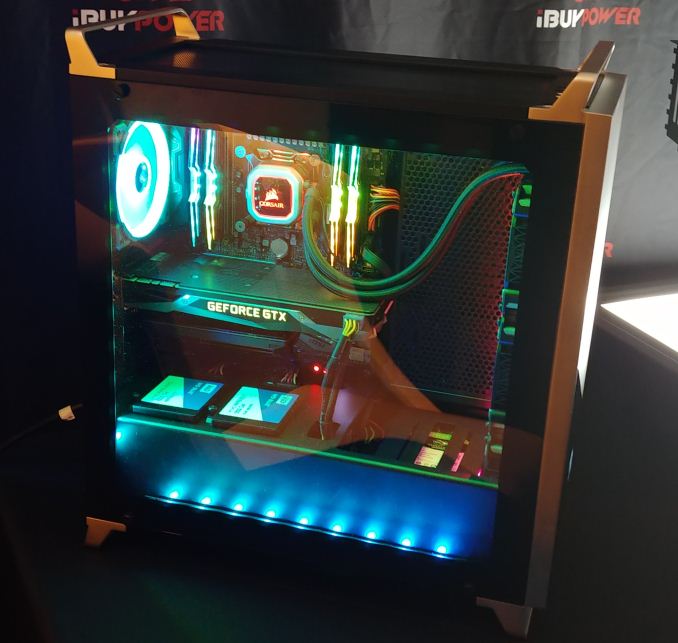
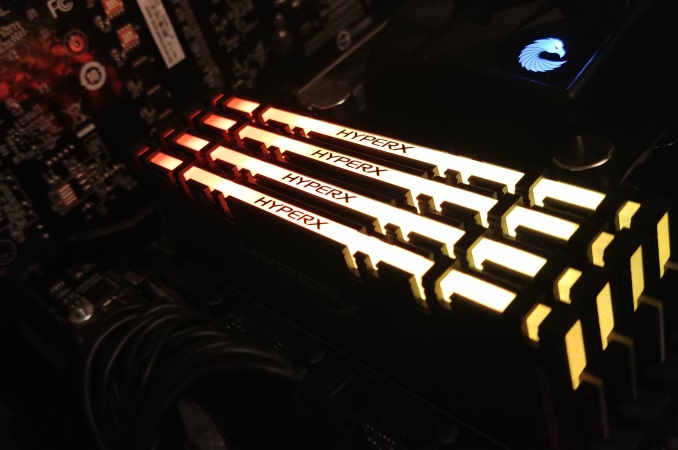
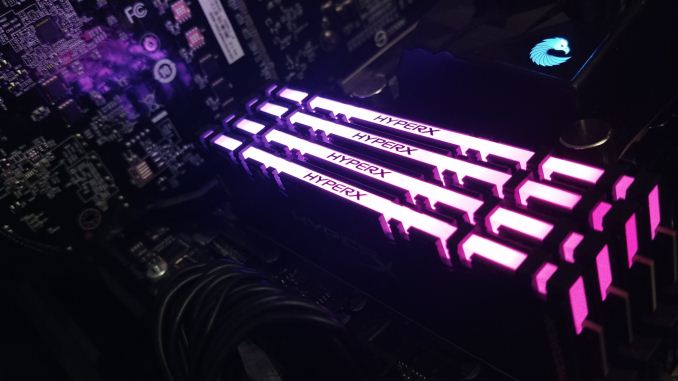
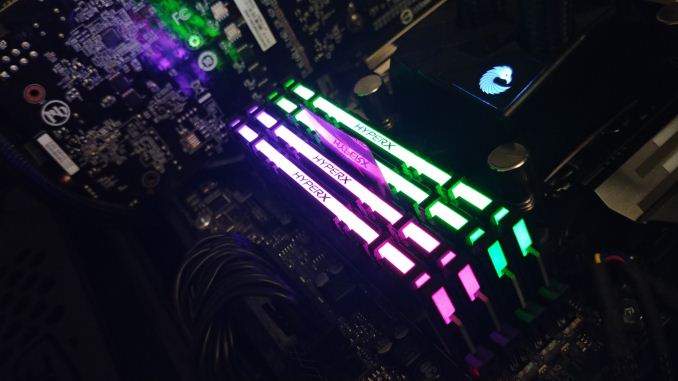
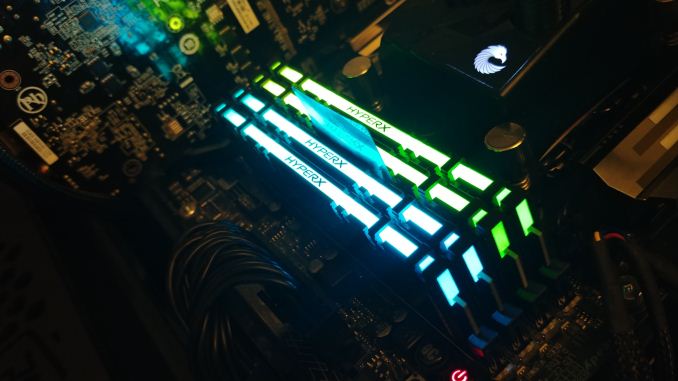
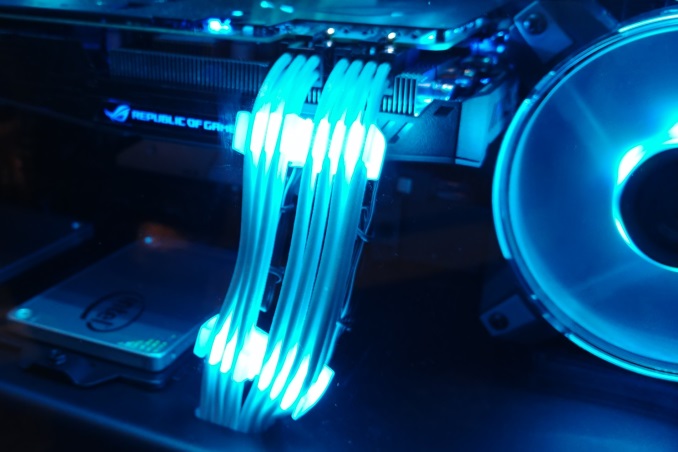

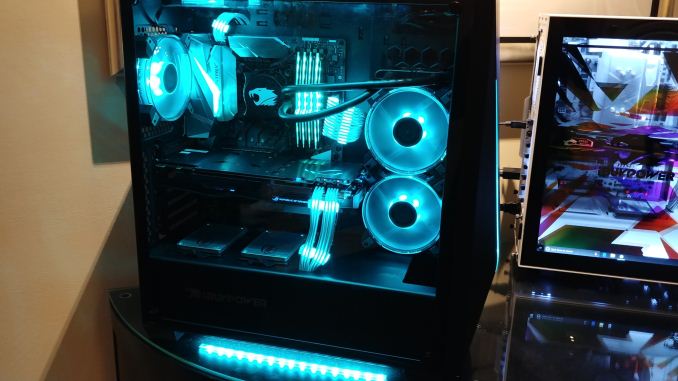
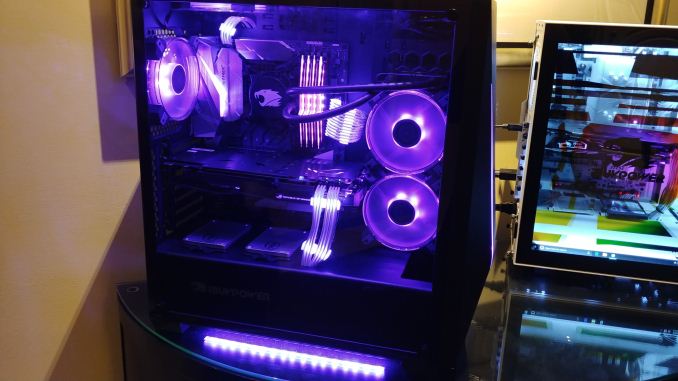
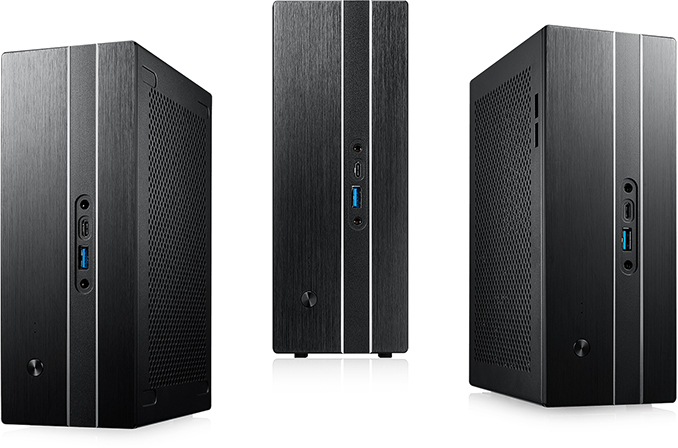

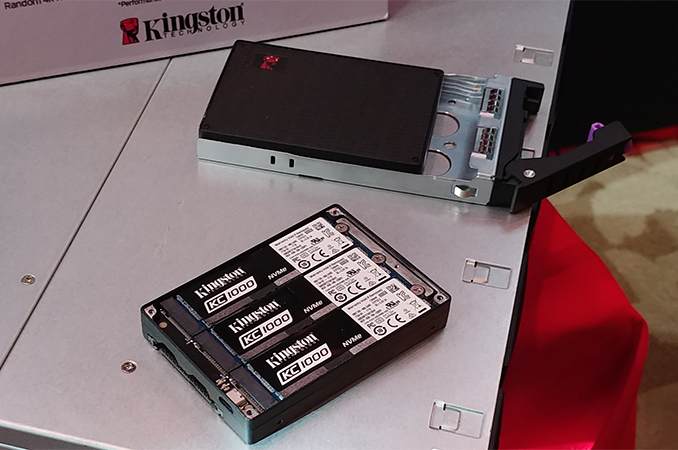
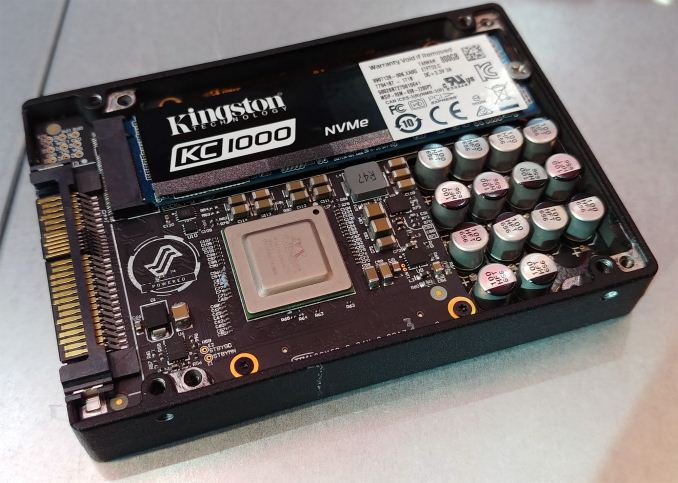
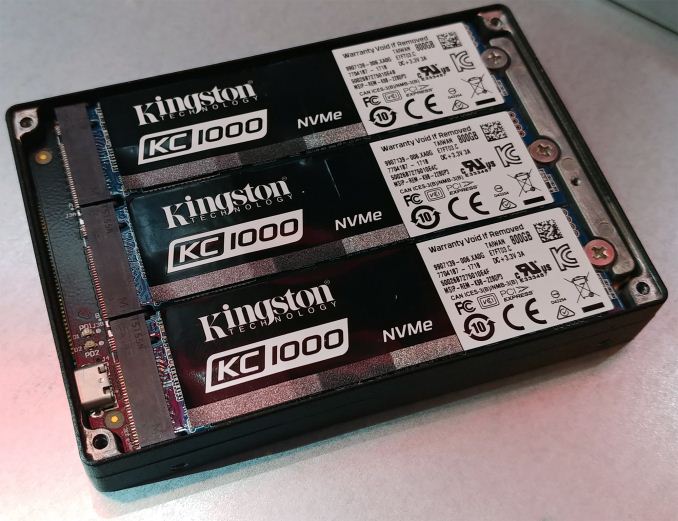
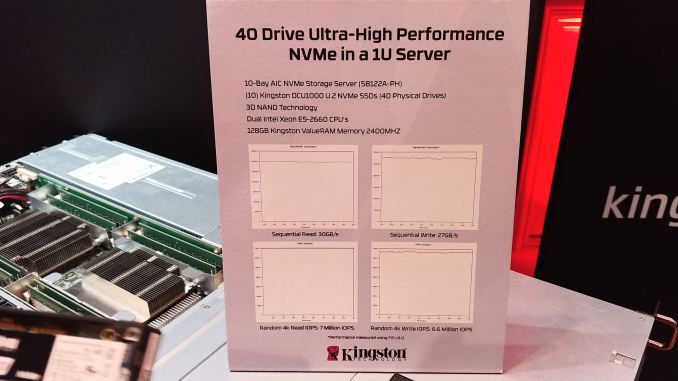
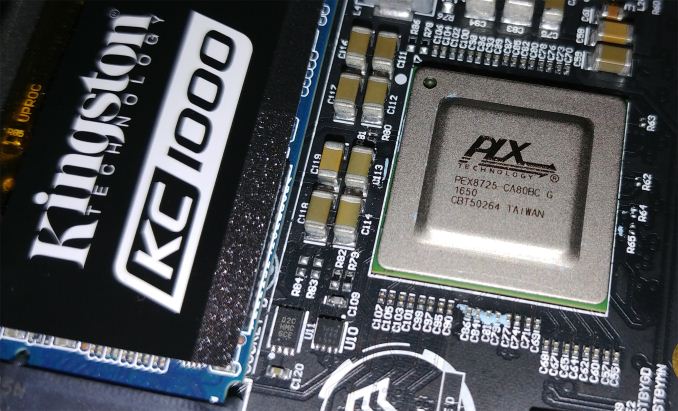
















Bookmarks